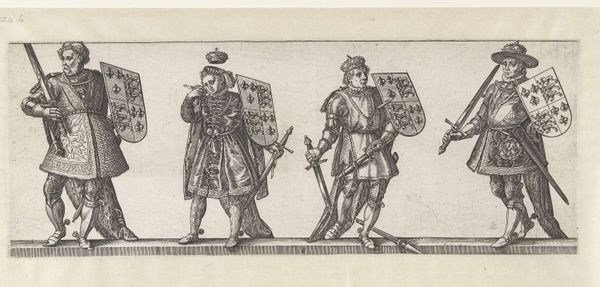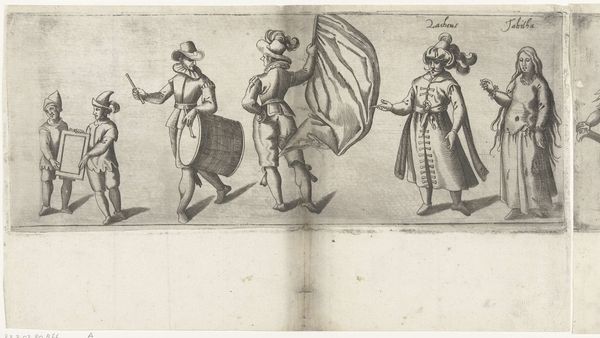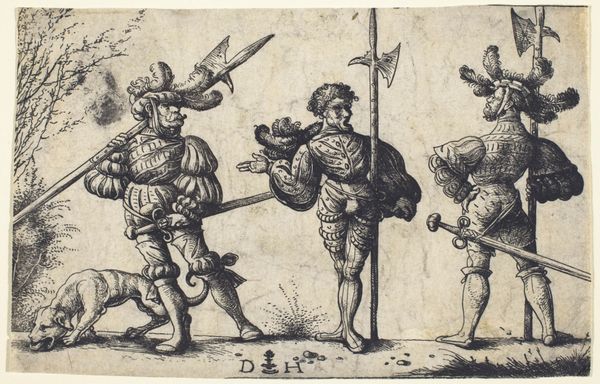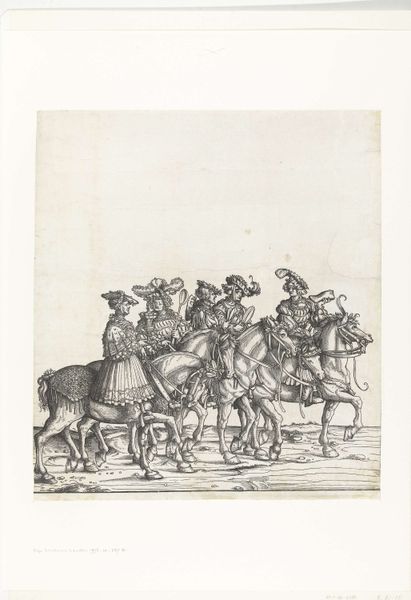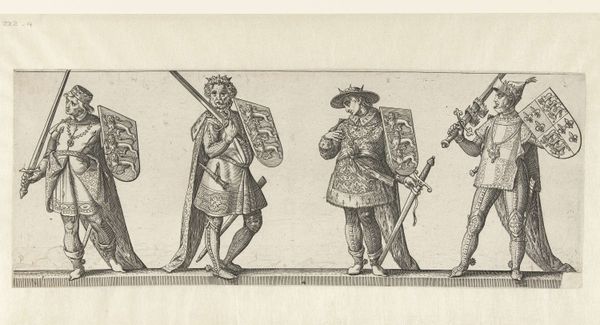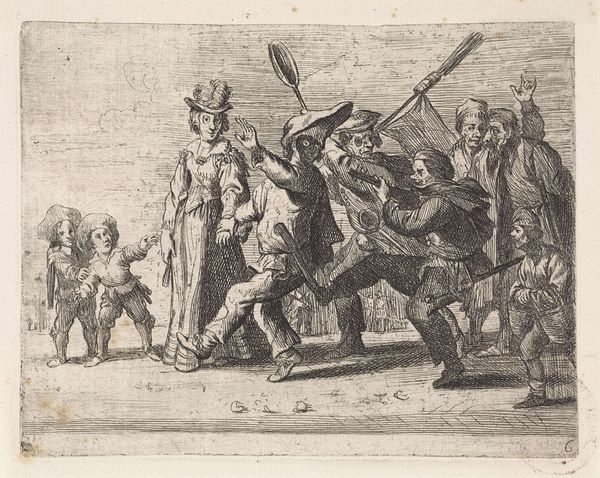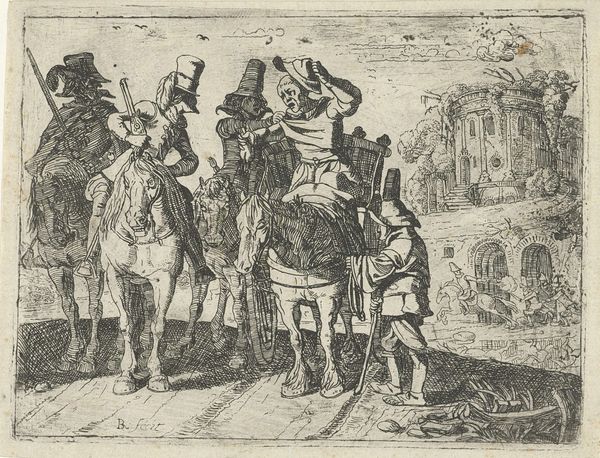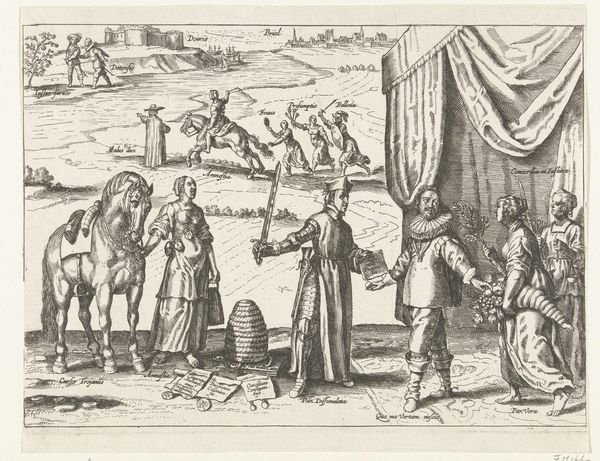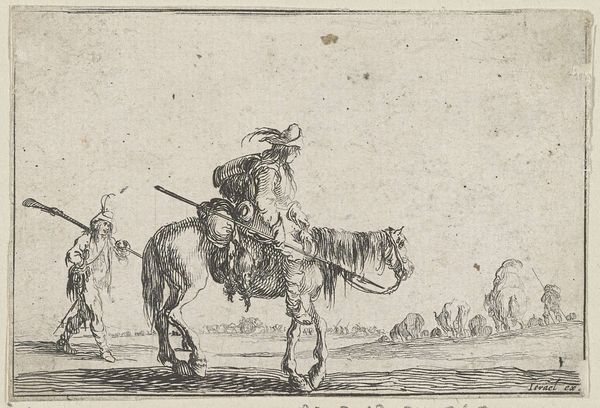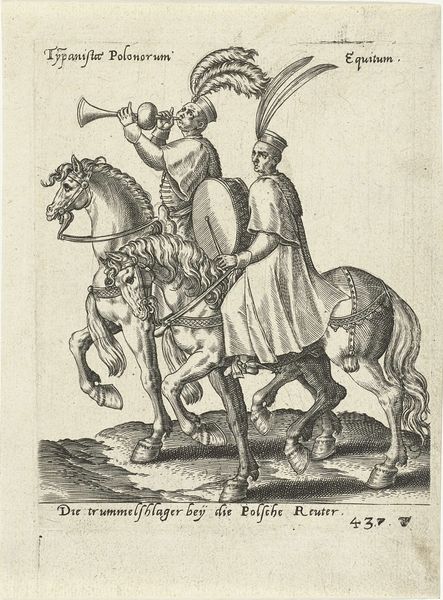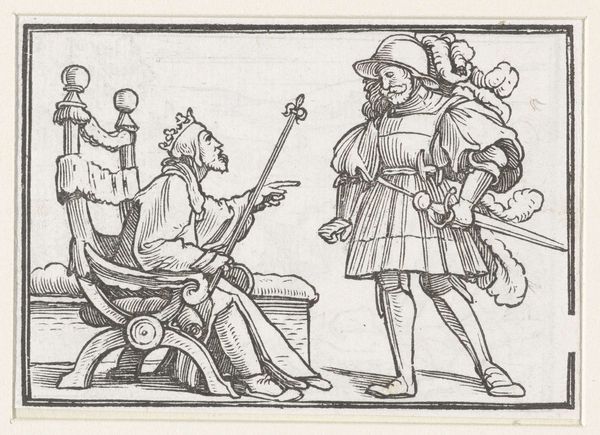
print, engraving
#
imaginative character sketch
#
light pencil work
#
quirky sketch
#
narrative-art
#
baroque
# print
#
caricature
#
pencil sketch
#
figuration
#
personal sketchbook
#
sketchwork
#
pen-ink sketch
#
sketchbook drawing
#
sketchbook art
#
engraving
#
fantasy sketch
Dimensions: height 100 mm, width 139 mm
Copyright: Rijks Museum: Open Domain
Curator: This intriguing print, titled "Dwergen en een ezel," or "Dwarves and a Donkey," was created by Stefano della Bella sometime between 1620 and 1664. You can find it here at the Rijksmuseum. Editor: It has a really odd feeling; it almost seems like a procession of sadness despite the almost cartoonish depiction of the figures. There is something unsettling about it. Curator: Right. Della Bella was known for his skill as a draftsman and printmaker. The texture created with such economy is particularly impressive. If you look closely, you will appreciate how such intricate lines, etched or engraved into a metal plate, result in the final print. Consider also, the nature of reproductive prints, their accessibility to a growing middle class, and their relationship to caricature traditions and the popular imagination during the Baroque period. Editor: The way the three figures are yoked together really highlights themes of forced labor and social hierarchy. Look at the supposed dwarf at the head, he is tied directly to the wall as if property. Is the man on the donkey aware of his power dynamic? It all raises questions of visibility, disability, and class during this period. It's quite complex. Curator: Della Bella used etching techniques that are very meticulous. He paid close attention to line weights and densities. He might also have used different tools to burnish and smooth areas for tonal variation, pushing the boundaries of printmaking at the time. Editor: This piece makes me think about who it was originally intended for, right? Like, were the elites chuckling about the misfortunes of these ‘dwarves,’ reinforcing stereotypes? Or, was there a more subversive message woven in about exploitation. The historical reception of art is very important! Curator: True, printmaking itself helped to democratize access to images and information. But in terms of the objectness itself, Della Bella's commitment to technique elevates printmaking beyond mere reproducibility, becoming a distinctive artistic statement itself. Editor: I’ll keep wondering about what it really represents—is it commentary or caricature? Regardless, it makes for complex thinking. Curator: A testament, I think, to both the technical skill and the open interpretations enabled by art of the Baroque era.
Comments
No comments
Be the first to comment and join the conversation on the ultimate creative platform.

